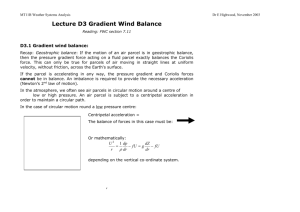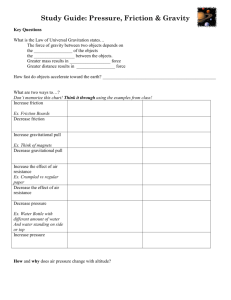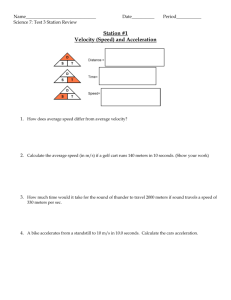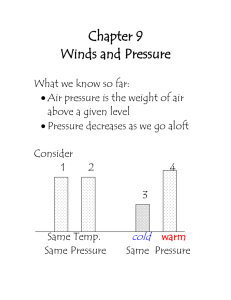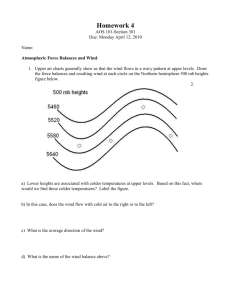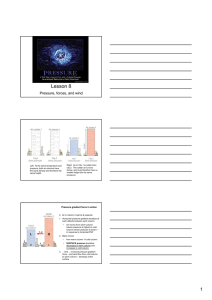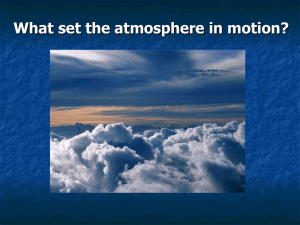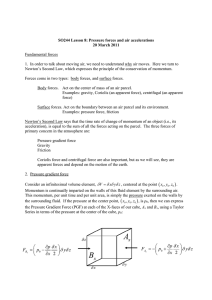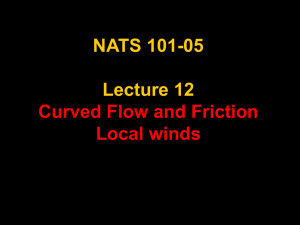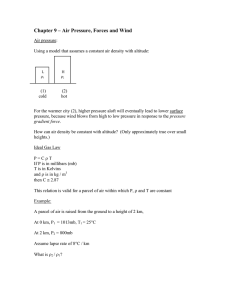Fundamental Forces
advertisement
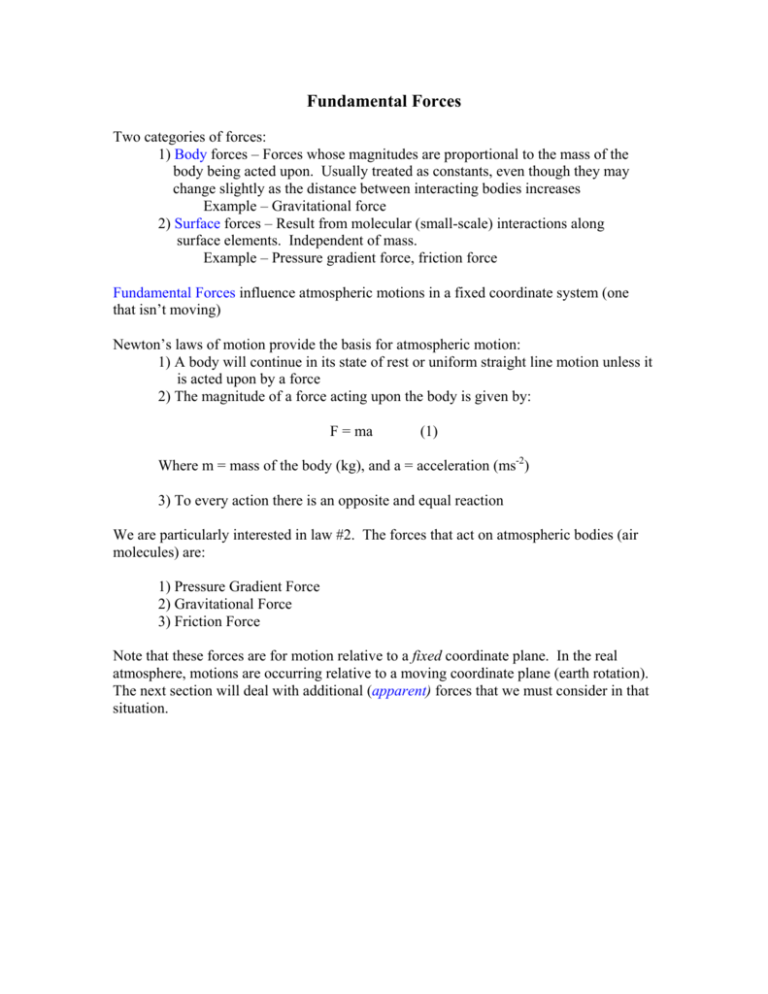
Fundamental Forces Two categories of forces: 1) Body forces – Forces whose magnitudes are proportional to the mass of the body being acted upon. Usually treated as constants, even though they may change slightly as the distance between interacting bodies increases Example – Gravitational force 2) Surface forces – Result from molecular (small-scale) interactions along surface elements. Independent of mass. Example – Pressure gradient force, friction force Fundamental Forces influence atmospheric motions in a fixed coordinate system (one that isn’t moving) Newton’s laws of motion provide the basis for atmospheric motion: 1) A body will continue in its state of rest or uniform straight line motion unless it is acted upon by a force 2) The magnitude of a force acting upon the body is given by: F = ma (1) Where m = mass of the body (kg), and a = acceleration (ms-2) 3) To every action there is an opposite and equal reaction We are particularly interested in law #2. The forces that act on atmospheric bodies (air molecules) are: 1) Pressure Gradient Force 2) Gravitational Force 3) Friction Force Note that these forces are for motion relative to a fixed coordinate plane. In the real atmosphere, motions are occurring relative to a moving coordinate plane (earth rotation). The next section will deal with additional (apparent) forces that we must consider in that situation. Pressure Gradient Force Consider a small air parcel (volume of air) located in an area where the pressure is increasing from left to right: First, we would like to find the pressure force exerted on face A of the block (FAx). We know that the force exerted from the outside of face A must equal the force exerted from inside the parcel because the parcel is neither expanding nor contracting in that direction. Thus, ∂p δx ⎞ ⎛ FAx = −⎜ p o + ⎟δyδz ∂x 2 ⎠ ⎝ In plain English, the pressure force from the outside of face A is equal to the pressure at ∂p point po (at the center of the box) plus the change in pressure in the x-direction ( ) over ∂x a distance of half the box length multiplied by the area of face A ( δyδz ). The negative sign indicates that the pressure force FAx is directed in the negative x direction. Similarly, we can write the pressure force acting on face B as: ∂p δx ⎞ ⎛ FBx = +⎜ p o − ⎟δyδz ∂x 2 ⎠ ⎝ The net horizontal force on the parcel is found by adding FAx and FBx : Fx = FAx + FBx = − ∂p δxδyδz ∂x (2) The net force is called the pressure gradient force (PGF) because it is proportional to the ∂p ). To derive the PGF per unit mass, note that derivative of pressure in that direction ( ∂x mass = density x volume: m = ρδxδyδz Divide Eq. 2 by the mass of the parcel to yield the x-component of the PGF: Fx 1 ∂p =− m ρ ∂x (3) Similar expressions can be found for the PGF in the y and z directions. The total PGF per unit mass in 3-D is: Fxyz m =− 1 ρ ∇p (4) Gravitational Force Newton’s law of universal gravitation says two masses will attract each other with a force given by: Fg = − GMm r2 The force per unit mass is: Fg m = go = − GM = Gravitational Acceleration r2 Where G = gravitational constant (6.673 x 10-11 Nm2kg-2), M = mass of earth, and r = distance between the earth and the object it is imparting its gravitational attraction to. For this course, the radius of the earth (6.37 x 106 m) >> any height above mean sea level (MSL) with significant atmospheric motion. So although the gravitational force does decrease with height above the surface, we will treat it as a constant (9.8 ms-2). Viscous (Friction) Force Molecules in the atmosphere are subject to internal friction, causing it to resist the tendency to flow. We’ll discuss more about this later in the course. For now, the friction force per unit mass is: Fr / m = Frxi + Fryj + Frzk The frictional force represents the collective effects of all scales of motion in the equations of motion. Throughout most of the atmosphere friction is so small that it can be safely neglected. However, motions in the planetary boundary layer (generally < 1 km in altitude) experience a frictional drag force that is comparable in magnitude to other terms in the equations of motion. So it must be included.
